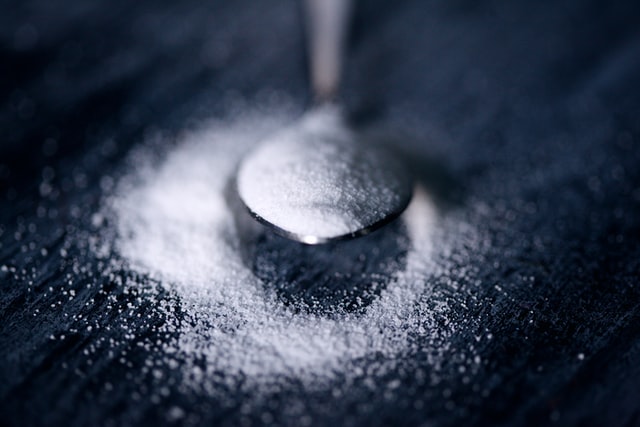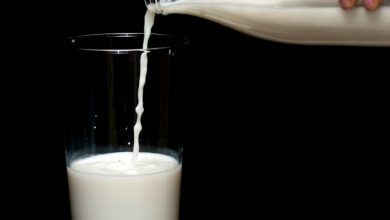
How to Follow the No Flour, No Sugar Diet
The concept of cutting out flour and sugar from your diet may sound easy; however, it will require a lot of planning and label-reading. In 2007, a physician named Dr. Peter Gott developed a diet implementing the practice of cutting out foods that have processed sugars and wheat. A subsequent book followed called No Flour, No Sugar Diet, written by the same developing physician.
But what does this sugar-free and wheat-free diet entail, and is it effective as a weight-loss tool? Below, we’ll discuss the ins and outs of this particular diet, including its benefits, and give you tips to help you eat right within its limitations.
What Is the No Flour, No Sugar Diet?
When you choose to follow a sugar-free and wheat-free diet, you’ll essentially be cutting out processed packaged foods, food with added sugar, and processed wheat-based foods. Many dieters don’t like how this diet sounds initially because it appears very restrictive and will end up removing a lot of food-favorites. However, many diets already base their critical components on the restriction of wheat and sugar if you think about it. By following the no flour, no wheat diet, you’re simply breaking this way of eating down to its core.
Although the name of this diet implies the restriction of only two ingredients, that’s not the case. Sugars can present themselves in various forms, as can wheat. We’ll address the importance of reading labels in this diet a little further down, but first, we’ve got some crucial guidelines here that you’ll want to keep in mind with this diet.
- No Wheat – While following this diet, it’s vital to restrict the consumption of refined wheat. Refined wheat is the processed form of grains that have bran and germ removed. This process also removes essential vitamins like iron, fiber, and vitamin B.
- No Sugar – Added sugars are non-naturally occurring sugar contents that are typically added into processed foods to sweeten and enhance flavors. Naturally occurring sugars, such as what’s found in fruit, are not cut out in this diet.
- No Processed Foods – Processed foods very often contain wheat and added sugars, which are essential to avoid while following this diet. Sticking to eating whole, unprocessed foods is the key to success.
- No Trans Fats – While many food manufacturers have significantly reduced trans fats, they can still be found in many processed foods. Everyone should mostly avoid trans fat consumption, as it introduces fatty acids into your system, which can raise cholesterol levels and affect heart health.
- No Sugary Drinks – When sugary drinks are consumed, such as sodas and juice, it leads to empty non-nutritional calories being consumed. In this diet, it’s important that water and non-sugary options are the primary drinks of choice.

What Are the Benefits of Following this Diet?
The list of benefits from following a diet that cuts out wheat and sugar almost seems endless. Here’s a look at how following this diet could help you lose weight and improve your overall health.
Benefits of Sugar Reduction
- Weight Loss – Reduction of sugar intake has been linked to decreases in obesity.
- High Cholesterol – Through the reduction of sugar intake, you can potentially lower your cholesterol levels.
- Cavities – Sugar has been shown to lead to cavities and tooth decay. By reducing or eliminating sugar, you can promote better overall dental health.
- Heart Disease – Heart disease risk has been shown to be reduced through the reduction of sugar intake.
- Diabetes – With diabetes being directly related to sugar processing, reducing sugar consumption can help control your body’s insulin levels.
Benefits of Eating Whole Grains Over Processed Wheat
- Heart Disease – By eating whole grains, some studies show a link to a substantial lowering of heart disease risks.
- Stroke – A 14 percent reduction in the chance of strokes occurring was demonstrated in six studies related to eating increased portions of whole grains.
- Weight Loss – Eating more whole grains can potentially reduce your chances of overeating and lower your overall body mass index (BMI).
- Better Digestion – Because whole grains have higher levels of fiber, your body’s digestive efforts can be better supported.
The Importance of Reading Labels
When following the no sugar, no wheat diet, it’s important to read labels often and understand what’s being shown. Sugar and processed wheat ingredients come in different forms and can be represented differently on labels. Below are some prime examples of ingredients to avoid while on this diet:
- Corn syrup
- Honey
- Invert sugar
- Malt sugar
- Molasses
- Syrup sugar
- Corn sweetener
- Fruit juice concentrate
- High-fructose corn syrup
- Brown sugar
- Bulgur
- Cracker meal
- Cereal extract
- Flour
- Hydrolyzed wheat protein
- Vital wheat gluten
- Modified starch
- Gelatinized starch
- Vegetable starch
- Wheat bran hydrolysate

What to Eat
With the list of things not to eat being so long on this diet, you might be left wondering what you can eat. As it turns out, there’s a long list of healthy and delicious foods that you can fill your meals with while simultaneously eliminating sugar and flour from your diet. Here’s a look at what to eat on the no flour, no sugar diet:
- Rice
- Oats
- Quinoa
- Potatoes
- Cauliflower
- Broccoli
- Carrots
- Apples
- Bananas
- Pears
- Peaches
- Strawberries
- Oranges
- Eggs
- Fish
- Lean protein
- Full-fat milk
- Full-fat cheese
- Nuts
- Seeds
Addressing Cravings
It can be challenging to stay ahead of cravings as they come up while you’re following a restrictive diet. Here are a few ideas to try the next time you’re craving sugar or flour-based food products:
- Pasta Cravings – If you’re craving your favorite pasta dish, try making a squash-based spaghetti or a bowl of yummy polenta topped with cheese.
- Sweet Cravings – Sweet cravings can be difficult to overcome when they occur. When your sweet tooth flares up, try your best to select fruit to satisfy your cravings healthfully.
- Bread Cravings – For bread cravings, opt for selections made from naturally sprouted wheat or sprouted rye. By doing this, you can address your bread cravings while still avoiding processed wheat.



